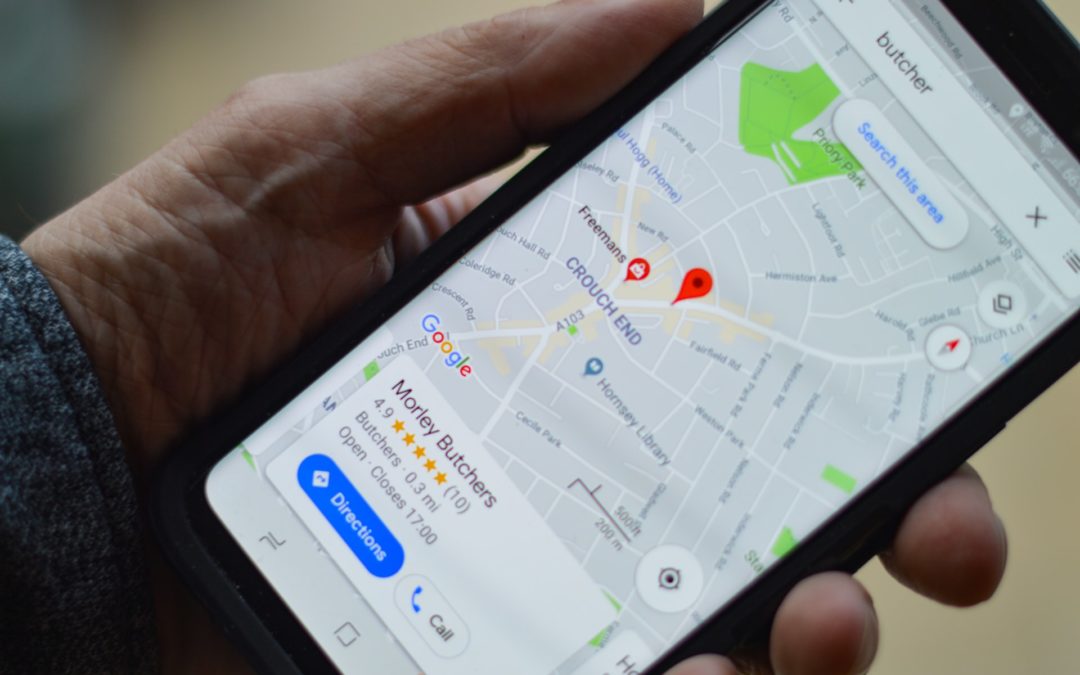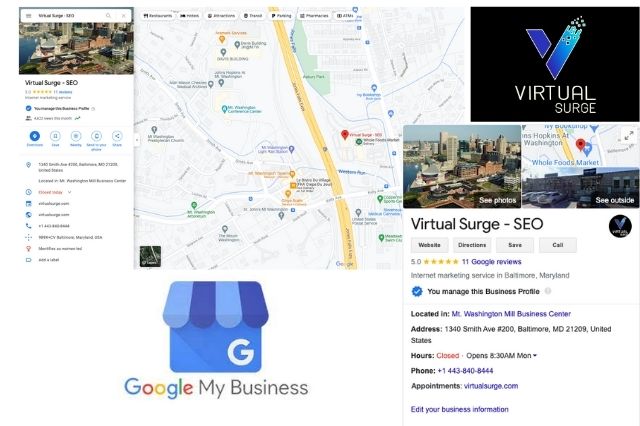
by shannon | Nov 7, 2021 | Baltimore SEO
The Impact of Social Media in SEO
The relationship between social media and SEO remains quite oblivious to this date. Although most business owners recognize the importance of being active on social media platforms, some often fail to acknowledge its impact on other digital marketing efforts. A strong social media presence can enhance the impact of other online marketing activities, SEO included.
Despite that, understanding this relationship can be quite difficult, which is why you should read on to understand the history between social media platforms and SEO. By the end of this article, you may also learn how it can affect your business’s SEO strategies.
The History Between Social Media and SEO
A website’s social media page may fail to have a direct impact on its search engine rankings. The situation can be more complicated. Essentially, nobody outside Google truly knows what the search algorithms can or can’t do. Most people often rely on public announcements for this information. In 2010, Danny Sullivan acknowledged that Google had social signals that help in ranking organic results. This theory was further confirmed by the former leader of Google’s webspam team, Matt Cutts. He modified his findings claiming that the search algorithm doesn’t treat social media profiles as ranking signals, but rather as independent organic search results.
Two years later, Google Webmaster Trends Analyst, Gary Illyes, agreed with Cutt’s point of view. In light of this information, it’s evident that social signals can impact organic search rankings, although not directly. However, websites that rank high organically most probably have a strong social media presence based on the content published across various platforms. Therefore, while Google will rank websites with impactful social media profiles, these profiles don’t directly affect how low or high they rank. As a general rule, the entire website should perform well for it to rank highly.
How Social Media Helps SEO
While it may not directly impact your website’s search engine rankings, you can use social media to improve your SEO.
- It Can Boost Content Performance
Social media platforms are a great way to share any content related to your business products. If you post content on your website without sharing it on any other platform, you may be wasting the resources you used to create the content in the first place. Social media sites provide a wider audience than you would have if you used your website alone to share content. Essentially, if you have more people viewing and engaging with your site’s content, you’re likely to obtain more positive user signals, which can benefit its search rankings.
- Social Media Profiles Can Rank for Search Terms
As a business owner, you’re probably more concerned with how your website ranks than how the social profiles rank. If potential customers search for your company using branded search terms, there’s a chance that your business’s social media accounts may rank alongside its webpage. Although the audience may be interested in learning about what your company offers through the website, many people may also want to see what you publish on social media. Social media accounts can provide a different perspective of your business alongside additional information about your products and services to clients that need it.
- It Can Attract More Traffic to Your Website
The ultimate goal of having an SEO strategy in place for your business is to increase its online visibility and attract more traffic to its website. However, focusing on improving the site’s search rankings may be the best, if not the only way, to attract more visitors. Staying active on social media and posting content relevant to your audience can also improve the traffic to your website. Social media helps tap into a wider audience, including customers who may not have discovered your company through an online search but require the products or services it offers.
If you’re using SEO for the first time, it can help you attract more visitors than search engines. SEO can take a long time before it starts bearing positive results. While the wait may prove worthwhile eventually, you may not get the traffic you need right at the beginning.
- A Good Social Profile Can Build Trust
Consumers today are overwhelmed with alternatives when it comes to making purchasing decisions. However, while having many businesses to choose from may be a great thing, it has also made it harder for customers to find a reliable service provider. Clients expect a legitimate business to have a social media presence and may label a company without one as untrustworthy. If you use SEO to boost your company’s online reputation and build trust with your potential customers, having a robust social media presence can be a powerful asset.
In a Nutshell
Every effort you make online to improve the presence of your business should work in tandem. Social media and SEO have individual benefits for businesses. However, when used together, they can prove to be more effective in helping you achieve your digital marketing objectives.
If you would like more information about how social media can help your SEO strategies, reach out to the online marketing experts at Virtual Surge.
by shannon | Oct 19, 2021 | Baltimore SEO

The Perfect Way To Optimize Images For Your Website
Image optimization may typically involve making images look good, load quickly, or easy for search engines such as Google to index. Essentially, it’s a process that entails saving and uploading images without compromising their overall quality.
While the whole exercise may seem complicated, you can use various image optimization plugins and tools to compress images automatically up to 80 percent, without any fluctuations in the image quality.
You may enjoy various benefits when you optimize images you upload and share on your business website. Here’s how image optimization can help you.
- It can increase the loading speed of your website.
- Your website’s SEO rankings may also improve.
- Image optimization can guarantee a higher conversion rate for leads and sales.
- It can reduce the cost of backup storage.
- It can also mean less storage and bandwidth acquisition expenditure.
Given the above advantages, below are some tips you can use to optimize images for your website.
Start by Choosing Quality Images
You don’t need expensive photography equipment to have quality images to use on your website. There are many stock photo sites that you can use to download free images for commercial use. Some of the popular options include;
- Barn Images
- Unsplash
- Pixabay
- Little Visuals
- PicJumbo
- SplitShire
Alternatively, there are a few tricks you could use to make your images look well-lit and professional without the need for sophisticated camera equipment. That’s if you don’t know how you can obtain images from a stock photo website.
If none of the above options seem viable based on your needs, you can use free online tools to optimize your infographics and images with font overlays. Additionally, an exceptional logo design can serve as an optimized image for your company’s website.
Select the Appropriate File Type
There are different types of image files, including PNG, GIF, JPG, and SVG formats. However, website images often comprise JPG or PNG formats. Each format presents a different set of pros and cons. That said, below are some of the tips you should keep in mind.
- You should always save photographs as JPGs.
JPG formats, also known as JPEGs, can accommodate all the colors in an image in small and efficient file sizes. A JPEG image can help you avoid having an enormous file, which you may get if you saved your photograph in PNG format.
- Always save graphics in PNG format.
Graphics typically include logos, images with a lot of text, designs, and infographics. While PNGs offer a higher quality image than JPEGs, they come with larger file sizes. Essentially, PNGs often feature images with lots of colors and crisp lines that allow you to zoom in without compromising the image quality.
PNG files also support transparent backgrounds, which can come in handy if you’re planning to use a logo. Experts in site optimization recommend using PNG format files in 24-bit format rather than eight-bit due to better image quality and a wide array of supported colors.
Resize Your Images to Enhance Site Speed and Appearance

When looking for images for your website, you should strike a balance between the resolution and file size. Essentially, always remember that the higher the image’s resolution, the larger the file size.
For instance, if you upload a photo from your phone or a DSLR camera, the resolution, height, and width dimensions may be higher than what you may need. While this may be a great option for print or desktop publishing, it may not be suitable for your website.
With that in mind, reducing the file dimensions can help reduce its size. You can use image-editing software to downsize the images you’d like to use. For instance, you’ll have to choose a JPG format with dimensions of 1,200 × 795 pixels if you were planning to utilize an image that’s about 1.8 megabytes with dimensions of 4,900 × 3,200 pixels. It can reduce the file size by up to 94 percent.
Name the Image File Appropriately to Help Achieve Your SEO Objectives
Many people rarely give much thought to the names they assign the image files on their website. You should pay attention to how you name the files before uploading them to your website since it can make the photos easier to manage.
Past that, based on where the images appear on the internet, using the correct naming can boost the efficiency of your SEO strategies. To guarantee consistency throughout your website, take note of the following tips.
- Try sticking to lower case letters and numbers from zero to nine.
- Avoid using punctuation marks and leaving spaces in between words.
- Consider using hyphens instead of underscores.
In Conclusion
If you need to optimize images for your website, there are four easy ways to do it. They include choosing the right image quality, selecting the appropriate file type, resizing the images, and using the proper file-naming technique.
If you need assistance in image optimization for your site, don’t hesitate to contact the digital marketing professionals at Virtual Surge. You’ll get personalized solutions to meet your SEO needs.

by shannon | Oct 9, 2021 | Baltimore SEO, Digital Marketing, Marketing, Posts
The Best and Easiest Way to Optimize Google My Business
Some search engine marketing strategies can be costly and challenging to implement. That’s why Google My Business listing can be an invaluable asset to your business.
Studies show that four in five people use search engines to find local information. It has also been discovered that half of all individuals who use online resources to search for a local business visit the company they choose within 24 hours.
Google My Business (GMB) is a free tool that businesses with a brick-and-mortar address can manage their online presence in various search engines.
That said, a GMB listing or page can help your business appear on Google Maps and rank better on search engine results pages. If yours is a local business, GMB has additional features to enhance your company’s local listings and improve its ranking in local searches.
Due to its effectiveness in expanding a business’s digital reach, GMB has become a popular online marketing tool for most local establishments, increasing competitiveness. To help your company stand out, you can rely on the following tips on how to optimize your Google My Business page.
Create Your Google My Business Profile

The first thing you can do to optimize your GMB page is to create a company profile complete with detailed, accurate, and up-to-date information. In that context, you should ensure that you’ve filled out all the required fields on your listing, which include;
- Company name
- Phone number
- Physical address
- Website
- Category
- Description
- Hours of operation
- Questions and answers section
- Photos
- Additional fields that may appear based on your industry.
By providing the information requested by Google, it becomes easier for potential customers to find and contact your company for transactional purposes. Your company also stands a chance of ranking higher on the Google results page.
Select a Specific and Relevant Business Category

The category you choose for your business is quite essential as it helps Google determine on which online searches your business’s listing will appear. Google offers a list of available categories, which you’ll have to use since you can’t generate your own.
If you can’t find a specific category that fits your business’s description, try selecting a general classification that accurately captures your company’s profile.
Add High-Resolution Images of Your Business

Image optimization can be a cost-effective way to expand your online reach via your Google My Business listing. Google claims that companies that add their photos on their GMB profiles can get 42 percent more requests for their directions on Google Maps than businesses that don’t. Similarly, it acknowledges that such businesses may also get 35 percent more clicks on their websites.
That said, you should consider using high-definition images to provide customers with a glimpse of what to expect from your company. To do this, you can add your business’s logo or photos of the sales team, office, or anything that can showcase your offerings. As a bonus tip, you should also try developing a 360-view interactive tour of your company for potential clients.
Past that, to ensure that your photo looks just right on your GMB page, you need to follow some predetermined specifications for uploading images. These specifications have been detailed below.
- Your images should be in PNG or JPG format.
- The images should be sized between 10 kilobytes and 10 megabytes.
- The minimum resolution for each image should be 720 pixels tall and 720 pixels wide.
- Use only high-definition photos, without significant alterations or excessive filter use.
Provide a Local Contact Number
Besides ensuring that you’ve provided a consistent phone number across all of your company’s digital listings, you should also offer a contact number that features your local area code.
This helps Google identify your company as a locally owned and operated service provider. Past that, you should ensure that the number you use on your GMB page is the same one on your business’s website or in the landing pages you may include in your listing.
Monitor Your GMB Question and Answer Section

The GMB Q and A section is arguably one of the great features for local search marketing on Google. Here, your potential clients can pose questions regarding your company, and you can provide real-time answers to their queries.
That said, failing to monitor this section and respond to customers’ inquiries can lead to misinformation about your business. It may even affect your company’s reputation negatively both online and on the ground.
Contact a Full-Service Digital Marketing Company
If you need local search engine marketing strategies, look no further than Virtual Surge. We have extensive experience implementing SEO tactics, reputation management, web design, and coordinating SEO audits.

by shannon | Sep 22, 2021 | Baltimore SEO, Posts
Trending Topics For Content Creation
In this digital age, it has become easier than ever to discover what’s got people buzzing in your locality, country, or even the world at large. The term trending has become synonymous with popular online content. It doesn’t matter where the piece of content comes from or the format it’s in. If a similar article is viewed, reacted to, and shared consistently, digital platforms will often note it and sometimes prioritize it.
Knowing how to find trending content can help you grow your craft and achieve better marketing outcomes as a content marketer. This is because finding trending content involves looking for topics or issues that people are already interested in.
You can use this knowledge to benefit from the online traffic the content generates, irrespective of whether you’re sharing it yourself or integrating it into your work.
However, finding trending topics for content creation can sometimes be quite hectic. Therefore, regardless of whether you’re looking for quality blogs or viral social media posts, below are some of the few ways you can use to get what you’re searching for.
Social Media Trending Sections

Today, content creators can rejoice that social media platforms appreciate that people enjoy knowing what’s popular around them. Most social networking sites feature their trending sections, often including a change option at the top of the list of trending topics.
This option allows you to adjust the trends around various fields, making it easier to find popular content around the topics you’d like to focus on for your brand. A survey by the Pew Research Center discovered that approximately 62 percent of American adults received their news from social networking sites.
With that in mind, rest assured that speaking with people about trending topics on these platforms could help you gain significant common ground with your brand’s audience.
News Sites That Cover Trending Topics
Contrary to popular belief, many of the internet’s leading news sites that focus on trending topics can be a great way to find out what’s popular locally or worldwide.
As you browse the internet searching for inspiration for your next content, some of the topics that may pop up on sites such as BuzzFeed and Reddit may not be relevant to the message you want to communicate with your brand. However, such sites may have subsections that can help you find content that can resonate with your audience.
Although you may need to shift manually through the web pages to determine which topics deserve your attention and those that don’t, you’ll eventually find exactly the kind of content you’re looking for. These sites can also help you discover breaking stories in real-time instead of waiting for two or three days after their appeal has worn down.
Google Trends
Google is arguably the premier provider of digital marketing tools, offering online marketers robust products such as Google Analytics, Google AdWords, Google Blogger, and Google Webmaster Tools. The company also has something extra for content marketers, Google Trends, a reliable alternative for anyone in need of trending topics for content creation purposes.
All you have to do is type the topic you’re looking for in the search box and evaluate the amount of online traffic it’s creating. If you can’t find anything actionable, the site allows users to perform country- or sector-specific searches to improve the targeting of the results.
To make an in-depth analysis of the results, you can click on the country or state names to receive completely localized outcomes. This can help you land significantly targeted keywords that can help you find content that focuses on your market base.
Social Mention

Social Mention is an intelligent tool that evaluates content across wide-ranging digital platforms. This means that it doesn’t limit its activities to major networking sites such as Facebook and Twitter.
Instead, the tool goes through over 100 other sites, including YouTube, FriendFeed, Digg, and sites that host user-generated content to discover trending topics. Upon submitting a query, Social Mention may provide a list of influencers who regularly post on one or more digital platforms about the issue.
In most cases, these individuals achieve their titles as influencers since they have many followers and a high level of audience engagement.
Contact the Best Digital Marketers Around You

With advances in technology constantly transforming how businesses interact with their customers and their performance in the industry, it’s high time for you to consider finding effective online marketing solutions.
However, as a business owner, you’ve probably realized that time may sometimes make it difficult for you to manage your business while concentrating on remaining competitive. Therefore, to enable yourself to focus on improving your brand’s performance, you should consider hiring digital marketing professionals at Virtual Surge.

by shannon | Sep 8, 2021 | Baltimore SEO
The Benefits of Competitor Analysis
Regardless of the type of business you own or manage, competition is inevitable. Your competitors could be someone in the same industry as you or even a company offering similar services or products as yours.
Healthy competition in business can advance innovation, diversify supply, and create better prices for consumers and businesses alike. However, if you’re not up-to-date with your competitor’s activities, you can miss out on significant growth opportunities.
That said, competitor analysis can prove impactful to any investor that’s keen on gaining an edge over their business rivals. To widen your understanding of how competitor analysis can help your enterprise grow, here’s a breakdown of what it essentially is, its potential benefits, and how to conduct a fruitful competitor evaluation.
Competitor Analysis Explained

One of the misconceptions constantly circulating among business owners is that competitor analysis is complicated, time-consuming, and unnecessarily extravagant. This notion is borderline misleading, especially if you consider the amount of knowledge you can acquire with a few well-articulated online searches.
Essentially, competitor analysis refers to the strategic identification and meticulous evaluation of your business’s competition. During this time, your focus should be on analyzing and comparing the competitor’s strengths and weaknesses to the products or services you’re offering.
Therefore, whether yours is a start-up or longstanding company, you should coordinate a periodical competitor analysis. It could go a long way in ensuring that you stay ahead of your commercial adversaries in the foreseeable future.
The main aim of your evaluation should be to;
- Study the market scenery of the local industry.
- Predict the market demand and supply trends.
- Reshape your business strategy.
- Establish and acknowledge possible threats.
- Recognize upcoming opportunities.
- Reinvent your company’s objectives.
- Determine your competition’s next course of action.
- Identify or speculate on future market trends and patterns.
By understanding how your competitor works, you can effectively transform your business strategy to improve performance and distinguish your company from others in the same industry. Below are some of the ways a well-executed competitor analysis can benefit your business.
The Benefits of Competitor Analysis

Actively seeking more insight into your business’s competitive landscape can pose a myriad of benefits. For example, information about your niche market can help improve your understanding of the external and internal environments the business is operating in.
Analyzing more complex aspects such as digital marketing and promotion scheduling strategies could give you a more significant edge over your business rivals. Past that, below are some of the expected gains associated with a competitive analysis.
- Enhanced understanding of the market.
- Improved customer targeting.
- Forecasting the market becomes easier.
- You can track the economic climate.
- Enabling competitor products tracking.
- Influencing competitor pricing.
- Creating tertiary market possibilities.
- Improved customer acquisition.
Debunking SEO Competitor Analysis

Most business owners constantly seek information about their competitors. Although it may sound simple, this constitutes competitor analysis. However, with the advent of technology and its increasing popularity as an important part of any business, new techniques that can be used to gauge the competition have come up, one of them being SEO competitor analysis.
Also known as competitive analysis, SEO competitor analysis, refers to a robust research strategy that can help modern business owners;
- Attract more traffic to their websites.
- Earn more conversions.
- Rank higher on search engine platforms such as Google, Yahoo, and Bing.
A competitive analysis typically involves analyzing the content, links, and keywords of your SEO competitor, reverse-engineering their SEO tactics, and incorporating them into your business’s SEO strategy. Essentially, instead of spending a significant amount of time developing a new strategy, you’ll use what’s proven impactful for your competitors to improve the chances of success for your company.
Although competitive analysis can be complex, it can provide viable answers to any one of the following questions;
- Who are my business’s SEO competitors?
- Which keywords should I target?
- What topics should I cover?
- Where can I find the links?
- What do I need to stay ahead of the competition?
With that in mind, stay advised that SEO competitor analysis can happen in several ways. However, it may typically involve;
- Identifying your true SEO competitors.
- Keyword gap analysis.
- Content evaluation.
- Link gap analysis.
- Google SERP analysis.
In a Nutshell
Even though it can be notably beneficial to both budding entrepreneurs and established business owners, competitor analysis shouldn’t be a one-time feat. Instead, it would be best to do it consistently since new competitors may appear without warning as old ones phase-out. As you analyze other businesses, remember to scrutinize yours regularly too.
While you’re at it, you should consider working with Virtual Surge, a leading SEO firm in the Baltimore area.
















